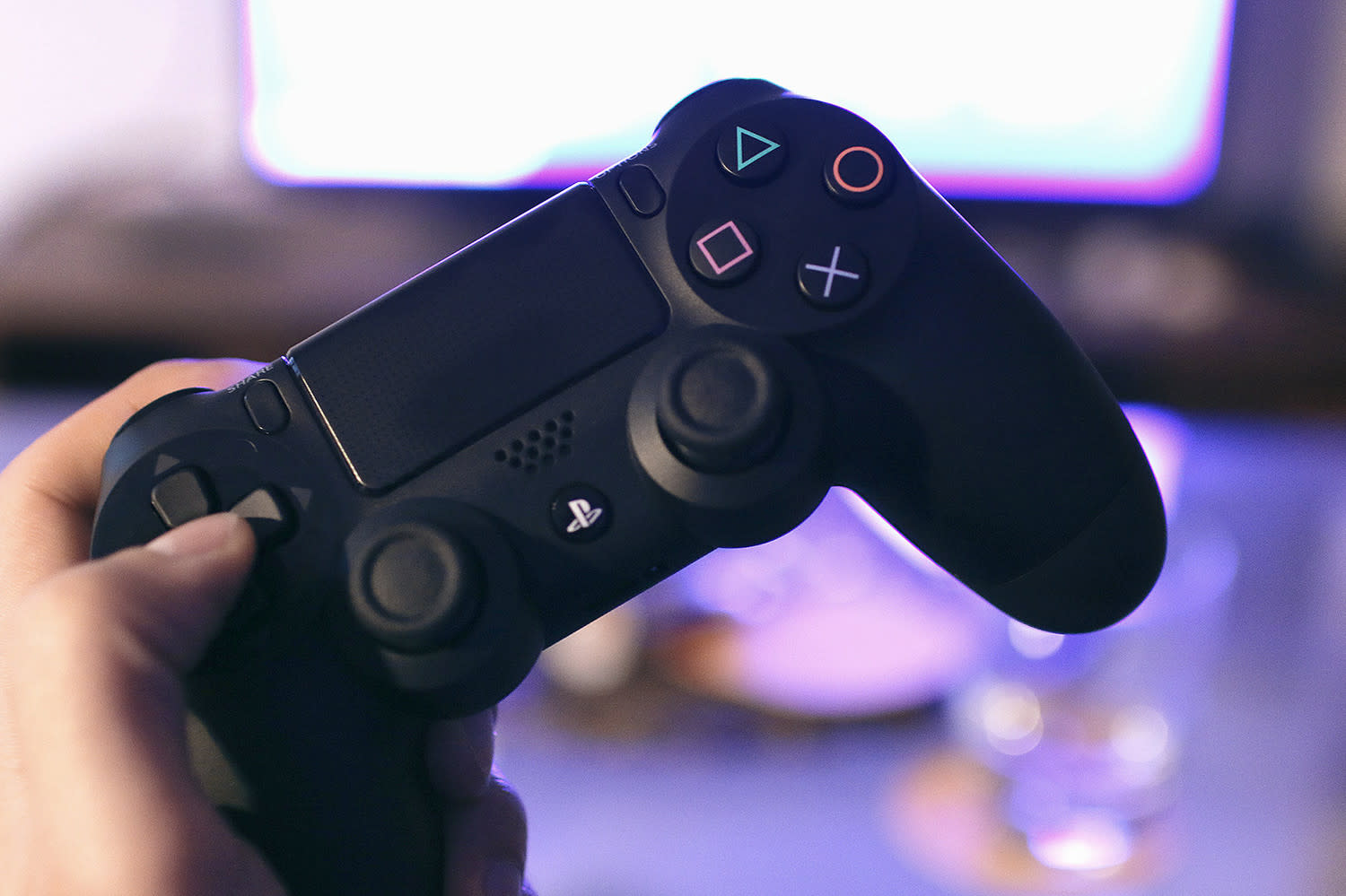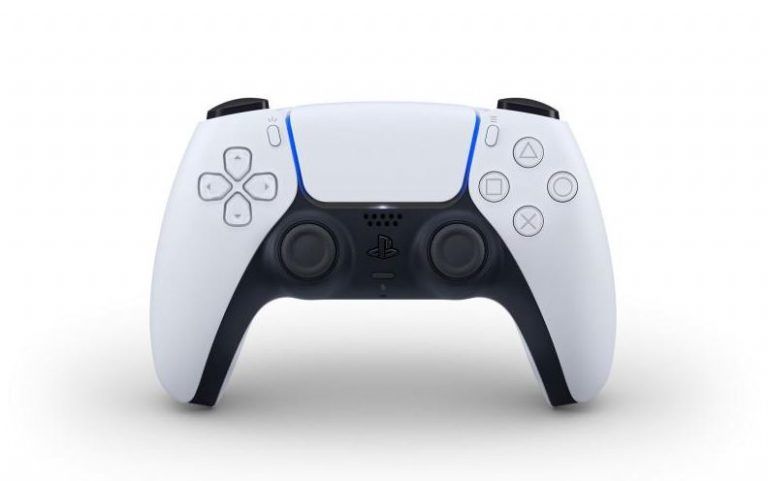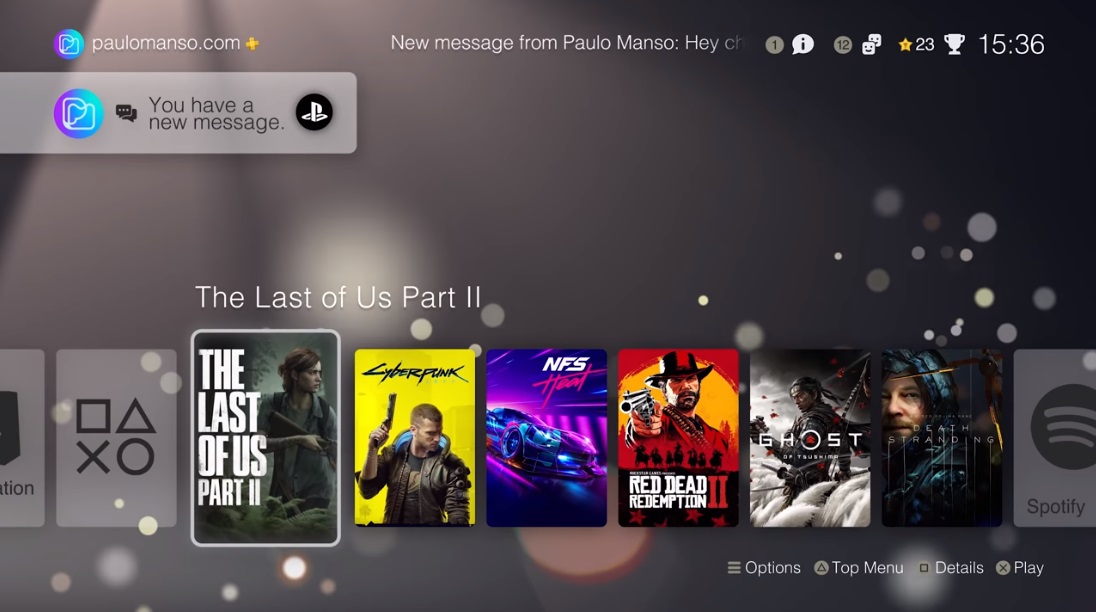Tämä on mainospaikka (näillä pidetään sivusto pystyssä)
Käytät vanhentunutta selainta. Kyseinen selain ei pakosti näytä tätä tai muita sivustoja oikein. Sinun tulisi päivittää selaimesi tai käyttää vaihtoehtoista selainta..
Lisää vaihtoehtoja
Who Replied?Miksi olet vaihtanut pienemmät akut DualShock 4:iin?Peliohjaimen akun kapasiteetti näyttäisi olevan 1560 mAh, kun omat DualShock 4 ovat 800 mA.
Jartza72
Well-Known Member
Sitä minäkin ihmettelen, kun noiden dualshock 4:n akku pitäisi olla 1000mA.Miksi olet vaihtanut pienemmät akut DualShock 4:iin?
Nisupulla
Jäsen / [FL]
Sitä minäkin ihmettelen, kun noiden dualshock 4:n akku pitäisi olla 1000mA.
Ovat taitaneet myöhemmin päivittää isommat akut ohjaimiin. Itsellä vuosia vanhat.
HideoMiyamoto
Well-Known Member
Originaali ohjain oli 1000mAh
 www.sie.com
www.sie.com
Sony Computer Entertainment Introduces Wireless Controller for PlayStation®4 (DualShock®4) and PlayStation®4 Eye
New York City, New York, February 20, 2013– Sony Computer Entertainment Inc. (SCEI) today announced Wireless Controller for PlayStation®4 (DUALSHOCK®4) and PlayStation®4 Eye, a new camera, along with PlayStation®4 (PS4™), its next generation computer entertainment system. Wireless Controller for...
Ohjaimen pohjassa olevassa tarrassa lukee 800 mA. Ihmisillä menee kaksi käsitettä sekaisin: milliampeeri ja milliampeeritunti.Originaali ohjain oli 1000mAh
Nisupulla
Jäsen / [FL]
Originaali ohjain oli 1000mAh
Sony Computer Entertainment Introduces Wireless Controller for PlayStation®4 (DualShock®4) and PlayStation®4 Eye
New York City, New York, February 20, 2013– Sony Computer Entertainment Inc. (SCEI) today announced Wireless Controller for PlayStation®4 (DUALSHOCK®4) and PlayStation®4 Eye, a new camera, along with PlayStation®4 (PS4™), its next generation computer entertainment system. Wireless Controller for...www.sie.com
Päivittivät vuonna 2016 akut.

Redeisgned PlayStation 4 DualShock controller now sold as a stand-alone item
Sony has released its first batch of redesigned DualShock 4 controllers at retail, giving PlayStation 4 owners a chance to upgrade their input devices without having to buy a brand-new PS4 Slim console.
Ainakin tuo Hideon laittama linkki on päivätty vuodelle 2013, outoa jos tuolloin ovat sanoneet 1000mAh vaikka ovat 800mAhPäivittivät vuonna 2016 akut.

Redeisgned PlayStation 4 DualShock controller now sold as a stand-alone item
Sony has released its first batch of redesigned DualShock 4 controllers at retail, giving PlayStation 4 owners a chance to upgrade their input devices without having to buy a brand-new PS4 Slim console.finance.yahoo.com
Edit: Näköjään 1000mAh ovat olleet alusta asti, 800mA on latauksen ampeerimäärä.
Viimeksi muokattu:
Nisupulla
Jäsen / [FL]
Peliohjaimen akun kapasiteetti näyttäisi olevan 1560 mAh, kun omat DualShock 4 ovat 800 mA.
Tätä aiemmassa huhussa puhuttiin 3-4 tunnin lisäajasta pelaamiselle uudella ohjaimella.

PS5 DualSense To Have 3-4 Hours More Battery Life Than DualShock 4, Not PSVR Compatible - Rumor - PlayStation Universe
A new rumor suggests that the PS5 Dualsense controller will have much longer battery life than the DualShock 4 and won't work with PSVR.
www.psu.com
Nisupulla
Jäsen / [FL]
Eilen julkistetussa Sonyn patentissa käytetään nestemäistä metallia lämpötahnan roolissa, lämmönjohteena prosessorilta jäähdytyselementille.
Ei kait ny sentää, eikö toi fluidity viittaa enemmänkin siihe valumenetelmään jolla se lämpöblokki on luotu? Miks siel ois nestemäist metallia? Eli elohopeaako?Eilen julkistetussa Sonyn patentissa käytetään nestemäistä metallia lämpötahnan roolissa, lämmönjohteena prosessorilta jäähdytyselementille.
Darth Vader
Well-Known Member
P
Poistettu jäsen 3274
Guest
Ei mun PS4 Pro ole ainakaan muuttunut Nintendoksi (vielä) vaikka siellä on nestemäistä metallia sisälläEhkä se on samaa ainetta kuin T-1000: " The T-1000 is described in Terminator 2 as being composed of liquid metal, or a mimetic polyalloy".
PS5 pystyy muuntautumaan esim Nintendoksi tarpeen tullen.
Sais kyllä muuttua Switchiksi.
Nisupulla
Jäsen / [FL]
Ei kait ny sentää, eikö toi fluidity viittaa enemmänkin siihe valumenetelmään jolla se lämpöblokki on luotu? Miks siel ois nestemäist metallia? Eli elohopeaako?
PItävä aihio pitää varmasti olla että pysyy nestemäisenä siellä mihin se on tarkoitettu. Tietokonetta kasatessa piitahna oli valmiiksi levitetty jäähdytyselementin kontaktipinnalla. Ehkä näemme PS5 nestemäisen metallin korvaamassa tämän saman piitahnan? Ominaisuuksien puolesta on parempi.
P
Poistettu jäsen 3274
Guest
GamersNexus vahvistaa tuon nestemäisen metallin käytön, niin ehkä tämä on vihdoinkin huhu joka pitää paikkansa.Eilen julkistetussa Sonyn patentissa käytetään nestemäistä metallia lämpötahnan roolissa, lämmönjohteena prosessorilta jäähdytyselementille.
Viimeksi muokannut moderaattori:
Lince
Well-Known Member
Tällaista tällä kertaa....

 www.notebookcheck.net
www.notebookcheck.net

Supposed PlayStation 5 user interface details leaked by disgruntled game developer and fan offers up smooth UI concept integrating official PS5 boot screen
Purported details of the PS5 UI have been leaked by a seemingly disgruntled game developer who claimed to have been working on the latest Call of Duty title. In the meantime, a fan has utilized the official PlayStation 5 boot screen to come up with a fresh-looking UI concept for the next-gen...
 www.notebookcheck.net
www.notebookcheck.net
Noobeinstein
Well-Known Member
Ensimmäinen PS5-mainos vuotanut nettiin. Kovasti hypetetään kontrollerin uusia ominaisuuksia. Toivottavasti ne ominaisuudet sitten tuntuvat yhtä hyviltä miltä kuulostavatkin. 
Nisupulla
Jäsen / [FL]
Ensimmäinen PS5-mainos vuotanut nettiin. Kovasti hypetetään kontrollerin uusia ominaisuuksia. Toivottavasti ne ominaisuudet sitten tuntuvat yhtä hyviltä miltä kuulostavatkin.
PlayStation Euroopalta:
Vauhtiin kun on kerran päästy, niin lisää kiitos!
Viimeksi muokattu:
Noobeinstein
Well-Known Member
PlayStation Euroopalta:
Myös uutta blogia pukannut jossa kerrotaan devien toimesta kuinka PS5:n kontrollerin ominaisuuksia hyödynnetään.
“The haptic feedback precision allows us to do all sorts of new things. In Marvel’s Spider-Man: Miles Morales, we’ll be hinting to players which direction attacks are coming from by providing haptic feedback from the appropriate direction on the DualSense wireless controller. What does it feel like to use Miles’s stealth ability? How does a Venom Blast feel? Because of the high resolution of DualSense wireless controller’s haptics system, we can really push the dimensionality of the feedback. For instance, as you hold down Square to do a Venom Punch, you feel Spider-Man’s bio-electricity crackle across from the left side of the controller, culminating in the right side on impact.” –Brian Horton // Creative Director, Marvel’s Spider-Man: Miles Morales
I’m really excited by the adaptive triggers and the haptic feedback, both features that will bring some physicality in game experiences, and give important feedback. Deathloop being a first-person shooter, we do a lot of things to make weapons feel differently from one another. One I like is blocking the triggers when your weapon jams, to give to the player an immediate feedback even before the animation plays out, which prompts the player in a physical way that they have to unjam their gun. –Dinga Bakaba // Game Director, Deathloop
With the DualSense wireless controller and the power of haptics, we can make the combat [in Demon’s Souls] feel grittier, darker, and deadlier. Now you feel every blow as you strike down your enemies and cast each spell. You’ll experience the force of a titanic boss’ attack as you pull off a well-timed guard. Metal strikes metal when your foes block your attacks or you block theirs. That extra sensory feedback through the controller allows you to know your attack hit home and your perfectly-timed parry was a success, so you can react faster and more decisively.
We can also turn the simple act of pulling a lever to open a gate into a sensory experience. This is something that rumble could never do. It could never replicate the feeling of metal striking metal or fire crackling in your hand as you conjure magic. Haptics [are] integral to the experience, to immersing the player in the world and adding to the gameplay. The visual, aural, and tactile working together takes this new generation of gaming into the future. — Gavin Moore // Creative Director, SIE Japan Studio
The adaptive triggers are something we’re excited to feature [in Ratchet & Clank: Rift Apart]! For instance, the Enforcer is a dual-barreled shotgun type weapon. As you pull the trigger, you’ll fire from one barrel, and you can feel resistance around halfway down the trigger. Need a bigger blast? Pull the trigger through that resistance point and you’ll fire both barrels at the same time. — Marcus Smith // Creative Director, Insomniac Games
I think the most effective use of the adaptive trigger [in Gran Turismo 7] is for representing the operation of the antilock brake system (ABS) while braking. A typical ABS releases brake pressure intermittently while the driver applies pressure to the pedal. The adaptive trigger is suited for recreating this pedal feel, and it will allow the player to accurately feel and understand the relationship between the braking force they want and the tire’s grip.
Compared to the rumble force feedback we had in the past, the special character of the haptic feedback is that it has a bigger range of frequencies it can produce.
What this means, is that sound design and tactile design can be handled in a continuous, integrated manner. — Kazunori Yamauchi // President, Polyphony Digital

Presenting PlayStation’s first global ad spot showcasing key immersive features for the PS5 console generation
Developers also share how adaptive triggers and haptic feedback provide new game experiences on PS5.
 blog.playstation.com
blog.playstation.com
